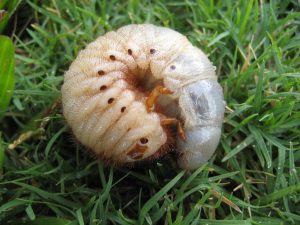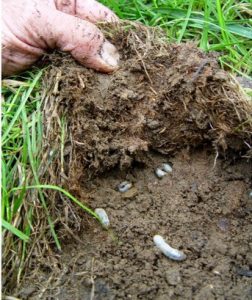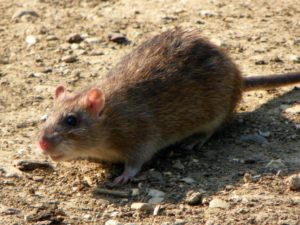 The Norway rat, roof rat, and house mouse are destructive rodent pests in and around farm facilities. This can be especially true during the winter months, as they seek food and refuge indoors. Rats and mice consume and contaminate food, gnaw on structural, mechanical, and electrical components, and weaken concrete slabs and walkways with their burrowing activities. They can also potentially carry diseases such as bubonic plague, leptospirosis, rabies, and bacterial food poisoning.
The Norway rat, roof rat, and house mouse are destructive rodent pests in and around farm facilities. This can be especially true during the winter months, as they seek food and refuge indoors. Rats and mice consume and contaminate food, gnaw on structural, mechanical, and electrical components, and weaken concrete slabs and walkways with their burrowing activities. They can also potentially carry diseases such as bubonic plague, leptospirosis, rabies, and bacterial food poisoning.
Usually, the first signs of rodent infestation are droppings or urine stains in and around buildings, because rats and mice are most active at night. If rodents are seen repeatedly during the day, it is an indication of an established population. It is estimated that for every rodent seen during the day around barns and poultry houses, there are likely 20 to 50 that are unseen.
Effective rodent control involves a three-step process. The first step is to “rodent-proof” the structure. This is very difficult because rats and mice can squeeze through holes just large enough to pass their heads through, as small as ¼ for mice and ½ inch for rats. They can climb through pipes; jump vertically three feet, horizontally four feet, and climb wires, cables, vines, and trees to enter a building.
Rats and mice have long been a problem on farms where food and nesting sites are plentiful. They are carriers of some 45 diseases and are capable of contaminating farm feed and water supplies helping to spread disease from contaminated to uncontaminated areas and from animal to animal. Many of these diseases are harmful to livestock and humans.
Evidence for pest menace,
SLO Food Bank: Health inspectors found rodent droppings at the warehouse
By KSBY | Dec 05, 2017
The Food Bank Coalition of San Luis Obispo County released more information Monday related to the unsanitary conditions health inspectors say were found at the organization’s warehouse last month.
Food Bank CEO Kevin Drabinski says after staff failed to renew its processed food registration license at its new San Luis Obispo warehouse, state health inspectors came out November 27 to check out the facility.
It was at that time Drabinski says evidence of rodent droppings were discovered at various locations throughout the warehouse. The food bank was then told no products could be moved in or out of the facility until further notice.
Poor storage eats up 48k tonne grain
TNN | Oct 26, 2015
PUNE: If only thousands of tonnes of food grain was stored properly in warehouses across India in the last three-and-a-half years, the country would not have run into such a severe shortage spiraling into a price rise in the essentials this year.
Country-wide data from the ministry of consumer affairs, food, and public distribution showed that of the total grain production in India, close to 48,900 tonnes was damaged in storage. Stocks usually come to the godowns after the Kharif or rabi seasons.
Experts said if India had not lost grain in this manner, more than sufficient quantity would have now been available to meet the consumption demand in the country.
Pest attacks, leakages in godowns, procurement of poor quality stocks, exposure to rains, floods and negligence cause losses.
Using of pesticides, rat baits, fumigation, glue board can be harmful to human’s health so instead of using an outdated control measure like the pesticides, we can make use of our products which repels.
We at C Tech Corporation are in a unique position to provide solutions to the problems caused by these creatures.
At C Tech Corporation we make use of Mother Nature’s gift of senses to these rodents in developing non- toxic & non-hazardous formulation!
Combirepel™ is a low-toxic, non-hazardous rodent aversive. Combirepel™ is a perfect blend of smart technology and green chemistry. This product acts through a series of highly developed intricate mechanism ensuring that the rodents are kept away from the application.
The product triggers a fear response in rodents thus protecting the application. It causes severe temporary distress to the mucous membrane of the rodents due to which the pest stays away from the application. The product triggers an unpleasant reaction in case if the pest tries to gnaw away the application. After encountering the above-mentioned emotions, the animal instinctively perceives it with something it should stay away from and stores this information for future reference. The fact that certain rodents are repelled is mimicked by other rodents as well. Thus, the other rodents too stay away from the applications. The unpleasant experience is imprinted within the animal’s memory and passed on to its progeny.
The product is compliant with RoHS, RoHS2, and REACH, APVM, BPR and is FIFRA exempted. Our eco-friendly products do not kill the target species but only repel them.
Our products are available in the form of a liquid concentrate, lacquer, wood polish additives, masterbatch and our newly developed product in the form of the spray.
Combirepel™ liquid concentrate, when diluted in paints, can be used to paint the interior and exterior of the walls of the warehouse, storage areas, ceiling, panels, mechanical equipment, vehicles used for transportation.
Combirepel™ lacquer can be coated topically over the applications which need protection. It can be applied to a variety of surfaces like wood, furniture, concrete, metal, polymeric utility pipes, and ceramic. It can be applied to the wooden accessories in the warehouse, already installed wires and cables
Combirepel™ wood polish additives can be applied as a topical application by mixing it with wood polish. It can also be applied to racks, pallets, furniture etc.
Combirepel™ masterbatch which can be incorporated in pipes, films, wires, cables, polymeric material, instruments, racks, pallets, grain bags etc.
Our newly developed product in the form of a spray can be applied to the racks, pallets, already installed cables and wires, furniture etc.
Our products provide a safe and environmentally friendly solution to avoid rodent infestation.
If you are facing problems from the sneaky pests that contact us on:
technical.marketing@ctechcorporation.com
Also, visit our websites:
http://www.ctechcorporation.com/
http://www.rodrepel.com/
http://www.termirepel.com/
http://www.combirepel.com/
Follow our Facebook pages at:
1] https://www.facebook.com/Combirepel-411710912249274/
2] https://www.facebook.com/Termirepel-104225413091251/
3] https://www.facebook.com/Rodrepel-120734974768048/
Follow us on our Twitter pages at:
1] https://twitter.com/rodrepel
2] https://twitter.com/termirepel
3] https://twitter.com/combirepel

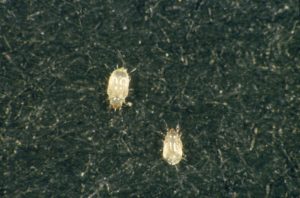
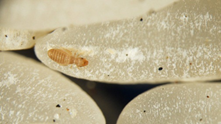
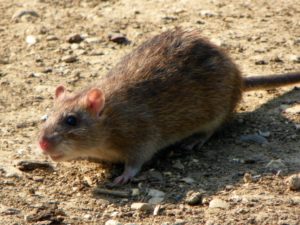 Pest menace in the agricultural sector is one of the most significant issues today in India which needs to be addressed immediately. Rodents cause millions of dollars in damages to field crops, stored grain and farm equipment every year. Apart from unpredictable rains, droughts and natural disasters insects are also the major contributors in lowering the agricultural yield every year. The damages can be categorized into two types, pre-harvest damages, and post-harvest damages. Harvest and post-harvest loss of India’s major agricultural production are estimated at Rs. 92,651crore ($13 billion) according to data published by the Ministry of food processing industries on August 9, 2016. The loss is almost three times as high as the budget for the agriculture sector.
Pest menace in the agricultural sector is one of the most significant issues today in India which needs to be addressed immediately. Rodents cause millions of dollars in damages to field crops, stored grain and farm equipment every year. Apart from unpredictable rains, droughts and natural disasters insects are also the major contributors in lowering the agricultural yield every year. The damages can be categorized into two types, pre-harvest damages, and post-harvest damages. Harvest and post-harvest loss of India’s major agricultural production are estimated at Rs. 92,651crore ($13 billion) according to data published by the Ministry of food processing industries on August 9, 2016. The loss is almost three times as high as the budget for the agriculture sector.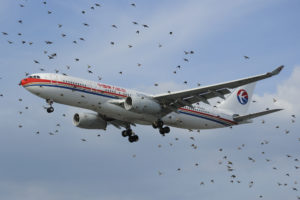 The most dangerous part of a plane when it comes to bird strikes is the engine.
The most dangerous part of a plane when it comes to bird strikes is the engine.

 You might be thinking, “Mice are tiny! How could they cause so much damage? The same can be said for rats, squirrels and other rodents. Don’t let appearances fool you. Mice and other rodents might seem sweet and innocent, but the reality is the damage they can do to your home can be significant and costly.
You might be thinking, “Mice are tiny! How could they cause so much damage? The same can be said for rats, squirrels and other rodents. Don’t let appearances fool you. Mice and other rodents might seem sweet and innocent, but the reality is the damage they can do to your home can be significant and costly.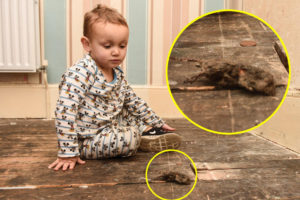 Carla Hazlett, 41, claims they have chewed her possessions and left droppings and urine all over her children’s clothes.
Carla Hazlett, 41, claims they have chewed her possessions and left droppings and urine all over her children’s clothes.